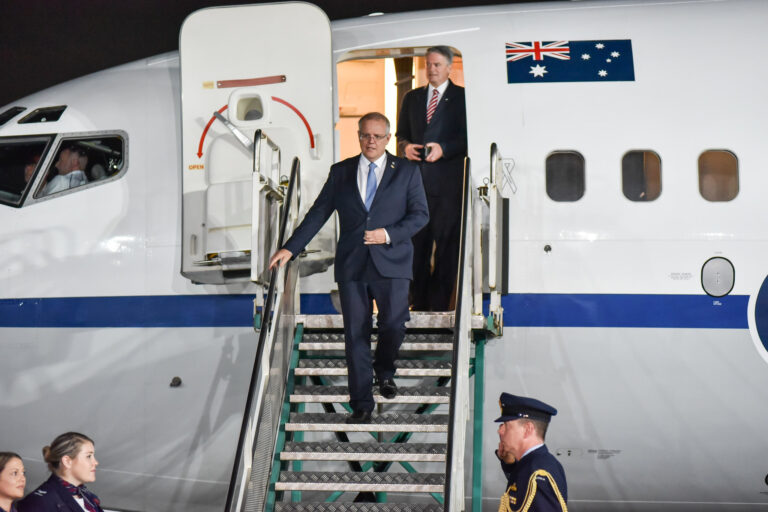The distribution of GST revenues among the states and territories is, by a wide margin, the largest single expenditure item in the federal budget. Its long-standing purpose is to ensure that each state and territory has the capacity to provide their citizens with a similar range and quality of public services, while also placing similar burdens of state taxation upon them.
However, this principle of horizontal equity has been thoroughly undermined by the changes legislated by the Morrison Government in 2018, with the support of the then Labor Opposition, at the request of Western Australia.
The background
The principle of ‘horizontal fiscal equalization’ was developed in the 1930s in the aftermath of the ‘Wexit’ referendum of 1933. Western Australia had benefited from the principle for nearly seven decades, receiving a larger share of ‘untied’ grants from the Commonwealth than would have been the case had those grants been made on the basis of shares of Australia’s population.
Following the onset of the ‘mining boom’ in the early 2000s, Western Australia sought changes to these long-standing principles. The mining boom, without significant effort from Western Australian state governments, resulted in Western Australia becoming wealthier than the rest of Australia, by a much larger margin than any other state had ever previously been. Therefore, Western Australia was expected to contribute to the pool from which it had previously benefited.
In 2019, following a hasty report by the Productivity Commission, with terms of reference that strongly favoured Western Australian interests, the state succeeded in its efforts to change the long-standing principles.
The deal
The ‘rules’ governing the distribution of revenue from the GST were changed in two particular elements. First, Western Australia was guaranteed that it would never get less than, initially 70%, and from 2024-25 75%, of a notional ‘equal per capita’ distribution of those revenues, regardless of the Grants Commission’s assessments of its expenditure needs and revenue-raising capacity.
Second, the fiscal capacity of the weaker states and territories would no longer be raised (through the distribution of GST revenues) to that of the fiscally strongest state – which for most of the past 15 years has been Western Australia – but rather, to that of the stronger of New South Wales or Victoria.
This amounted to a “heads WA wins – tails the other states and territories lose” outcome – since the distribution of GST revenues is, on the surface, a zero-sum game.
If the price of iron ore (and other commodities produced by Western Australia) fell substantially, its share of GST revenues would rise, as it would have done under the principles which had governed the distribution of GST revenues since 2000.
But if iron ore prices remained high, the downside to Western Australia’s share of GST revenues would be limited, and the carve-up of GST revenues would no longer seek to raise the fiscal capacity of the weaker states and territories to that of Western Australia, but instead to that of New South Wales, leaving more to be distributed on a per capita basis.
In order to cajole the other states and territories into agreeing to something that was clearly disadvantageous to them, the Morrison Government undertook to ‘top up’ the GST pool so as to ensure that, during the six-year period in which this new system was to be phased in, no state or territory would get less than it would have done had the principles not been changed.
Counting the cost
The ‘no worse off transitional guarantee’ was initially estimated to cost the Federal Budget, just under $9 billion over eight years (inclusive of the grants which the Morrison Government began making to Western Australia in 2018-19 outside of the allocation of GST revenues in accordance with the Grants Commission’s recommendations). That estimate relied on, among other things, an assumption that the iron ore price would come down to US$55 per tonne in short order and stay there indefinitely.
In fact, of course, the iron ore price has remained well over US$100 per tonne since then, and the Albanese Government has extended the ‘no worse off transitional guarantee’ for another three years beyond its originally scheduled expiry at the end of 2026-27.
These two developments have resulted in the cost to the Federal Budget of these changes blowing out, according to the most recent mid-year economic and fiscal outlook (MYEFO), to $39.2 billion over the 11 years to 2029-30. And that estimate also assumes that the iron ore price falls to US$60 per tonne by the September quarter this year, and remains at that level thereafter. My rough estimate is that if the iron ore price were instead to remain at its 2023-24 average to date, that out to 2029-30, the cost of the changes to the Federal Budget would be $49.8 billion.
This will result in a massive transfer. From the Federal Budget, which according to Federal Treasury estimates is in structural deficit (notwithstanding last year’s surplus and the one likely to be recorded this financial year), to a budget – the only one in Australia, and one of very few in the world, which is running and expects to continue running budget surpluses.
This will result in the transfer of at least $40 billion, maybe $50 billion, to the government of a state which is richer (and whose fiscal capacity is greater) than the rest of Australia, by a bigger margin than any other state has ever been since federation, so that its citizens can ultimately enjoy better public services and lower state taxes than other Australians.
Worst policy decision of the 21st century
The blow-out in the cost of these changes to the federal budget is, I suspect, possibly the largest in terms of dollars, if not in percentage terms, of any single ‘policy decision’ other than the National Disability Insurance Scheme and, perhaps, the introduction of the Private Health Insurance Rebate in the early 2000s.
Considering all these factors, the changes to the GST revenue-sharing arrangements made by the Morrison Government in 2018, with the support of the then Labor Opposition, and which have been continued and extended by the Albanese Government, arguably represent the worst public policy decision in Australia so far this century.
This is a summary of Saul Eslake’s policy brief, “The worst Australian public policy decision of the 21st century thus far – the changes to the arrangements for determining the distribution of revenue from the GST among the states and territories instituted in 2019”, published by the Tax and Transfer Policy Institute at the ANU.





Recent Comments